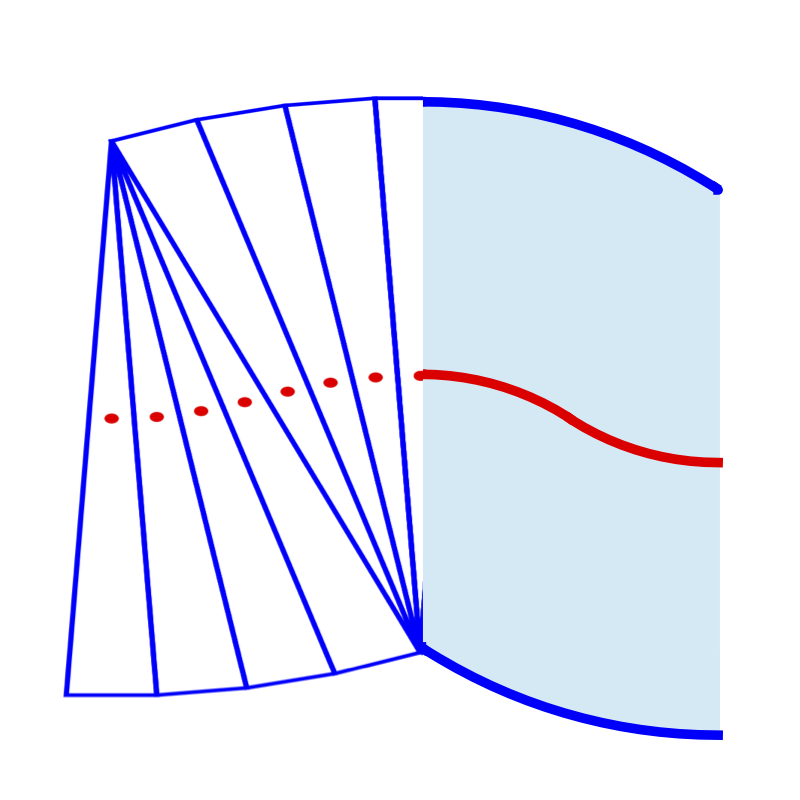
“Unbuckling” in a minimal model of a tissue: The height of the buckled shape can decrease with increasing compression. © Chandraniva Guha Ray and Pierre A. Haas / MPI-CBG / MPIPKS
Many of the wrinkly shapes that show up during development, like the folds of the brain and of the gut, are caused by mechanical instabilities. This folding of cell sheets is crucial for tissue and organ function.
Chandraniva Guha Ray and Pierre Haas from the Max Planck Institute of Molecular Cell Biology and Genetics (MPI-CBG), the Max Planck Institute for the Physics of Complex Systems (MPIPKS), and the Center for Systems Biology Dresden (CSBD) have now shown that these mechanical instabilities of tissues can be very different from classical instabilities such as the buckling of a sheet of paper under compression: As the compression of a sheet of paper increases, so does the height of the buckled shape. Chandraniva Guha Ray, a doctoral student in the research group of Pierre Haas, explains why this is not the case in a simple theoretical model of a tissue composed of individual cells: “As a tissue folds, the cell sides bend, which causes the top or bottom of the cells to shrink until they cannot bend anymore. This has an unexpected consequence that we called ‘unbuckling’: as the compression increases, the height of the buckled shape can start to decrease.”
Pierre Haas, a research group leader at the MPI-CBG, MPIPKS, and CSBD summarises, “Our calculations prove that this ‘unbuckling’ causes a huge increase of the tissue stiffness. This can be a mechanism for tissue folds to absorb compressive stresses from neighbouring tissues.” One example of a tissue fold that could rely on this mechanism is the so-called cephalic furrow in the fruit fly Drosophila that has recently been studied by the group of Pavel Tomancak at MPI-CBG. Pierre adds, “These minimal mechanical models are useful because they allow us to understand mechanical instabilities in more detail and hence how cell mechanics give rise to biological shape and function at the tissue scale.”
Chandraniva Guha Ray and Pierre A. Haas, Phys. Rev. Lett. 134, 118402 (2025). https://doi.org/10.1103/PhysRevLett.134.118402